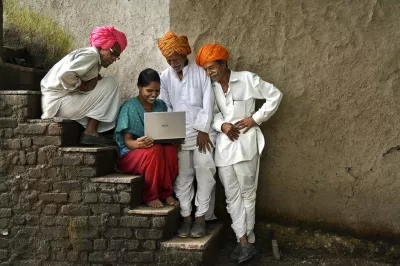How Does Tech Make a Difference in Digital Banking?
Digital banks have been innovating with new products and channels at a faster pace than traditional banks. This advantage is largely due to technology, though not in the sense of any particular invention or device. The secret to digital banks’ ingenuity has more to do with how technology and the overall architecture of their tech stacks enable an agile product management culture and scalability of their business models.
The new modular architecture

The power of modern banking technology lies in its "modular" structure. In simple terms, we can think of a banking stack as having front-end channels for the user interfaces, business rules that configure products and services, and a ledger that keeps track of the accounts. The stack must also integrate with the outside world, including payments systems, card management systems, SWIFT, and clearing and settlement networks.
Traditional core banking systems combine these features into monolithic structures. Functionality is built into a single organic structure anchored to the core banking system. Changes to the system require deep structural engineering. This traditional architecture is like a custom house built on a mountain cliff – carefully planned down to the last detail before construction, each room a different size, the electrical and plumbing systems winding their way through the house, connecting in bespoke ways to different fixtures. The house has limited space for expansion, with any future renovation requiring a deep retrofit to the entire house.
In contrast, a modern tech stack is modular. Its containerized, microservice architecture makes it possible to assemble functionality by bundling a common library of core components in different combinations. These bundles then talk to each other with APIs that function like a common set of linkages. Importantly, new functionality can be introduced without disrupting the rest of the system. A modern tech stack is like a modular home on flat ground, built with interchangeable components that can be added or taken away from any room. The plumbing and electrical systems flow underneath and can connect or disconnect to any room. Features or rooms can be added and taken away, or reconfigured, without disrupting the structure or function of the rest of the house. The modular home can be designed and constructed continually as many design teams experiment with their own rooms and features, while living in the house.
An agile product development culture
The traditional architecture imposes significant restrictions on the product development process. Most new product features require programming changes that have to stay within the foundational structure of the stack. These changes need to be thoroughly planned out in advance, and they often consume significant time and resources. This gives rise to a tech culture that is dominated by the tech department and limited by the relationship with the tech vendors. In short, tech drives the business. And the finance and risk departments tend to minimize changes to the stack because of the high risk and cost to the business.
In contrast, digital banks have been able to leverage their modular architecture into a new company culture that cultivates continuous product development. Product features can be built or modified in their own containers, minimizing disruption to the system. This makes possible an agile work culture capable of testing and prototyping new products and services based on customer feedback. Importantly, in an agile business environment, the business owners drive tech development. And this is what elevates the principles of customer-centric design to corporate management practice.
Scalability
Most (and sometimes all) of a modern stack is cloud-based and therefore scalable. Some parts of a banking stack need to grow at faster rates than others, and this creates growth bottlenecks in a traditional on-premises server platform. Data storage and analytics, for example, may require significant storage and server power at peak moments, and the overall requirements may increase dramatically with growth. A cloud-based environment can expand incrementally in any dimension, almost without limits.
The API layers in a cloud-based stack also make it possible for digital banks to integrate the services of third-party providers. This enables them to specialize in their unique service and save time and investment by accessing other features developed by external service providers (e.g., a fintech specializing in electronic know-your-customer solutions). In this way, the digital bank integrates into its own software a specialized function that it could not easily develop itself, and this can be done fast as the business need arises.
Data
Data is more easily managed in a modern tech stack. The orchestration engine in a modular stack can be integrated with a data environment to produce, extract and warehouse data in real time. In traditional stacks, data is extracted manually from the different parts of the system, then cleaned up and reformatted for uniform storage. In a modern stack, data is readily available in new ways for business decisions (e.g., credit approvals or suspicious transaction monitoring).
Cost
A legacy stack is typically more expensive than a modern platform. Significant upfront investment is required to launch a traditional on-premises platform with enough capacity for growth. Ongoing expenditures are also significant because of the number of staff required to maintain the system(s) and manage relationships with vendors. Traditional banks almost always capitalize and amortize the core investment costs. In contrast, some digital banks have been able to book their tech stack costs as operating expenses, a practice only possible when tech-related expenditures can be calibrated with the growth of the business.
The tech stack of modern digital banks is a piece of their technology culture that makes them faster to market and more customer-focused with technology-assisted products and services. A modern tech stack without an agile culture would yield suboptimal results, as would an agile culture without a modern stack.
This post is part of the blog series "What Makes Digital Banking Inclusive? A Look at Emerging Evidence." To learn more about digital banks, see other posts in the series. For a deeper look at how digital banks differ from traditional banks and how some are contributing to financial inclusion, see the recently published working paper "Inclusive Digital Banks: Emerging Markets Case Studies."




Add new comment